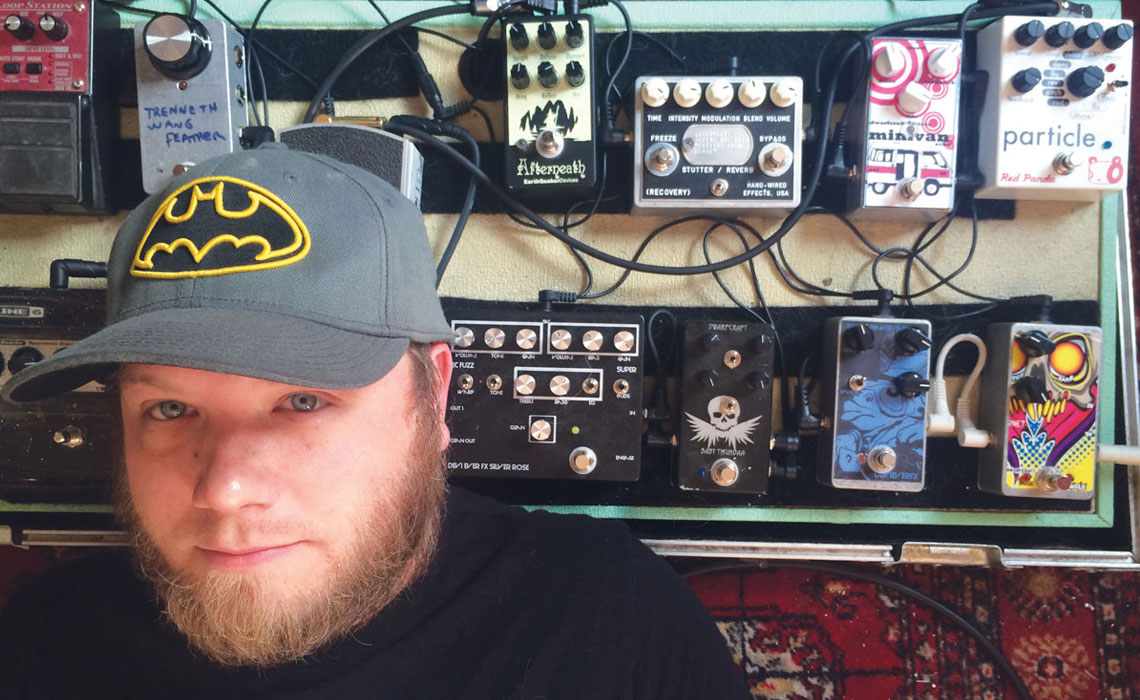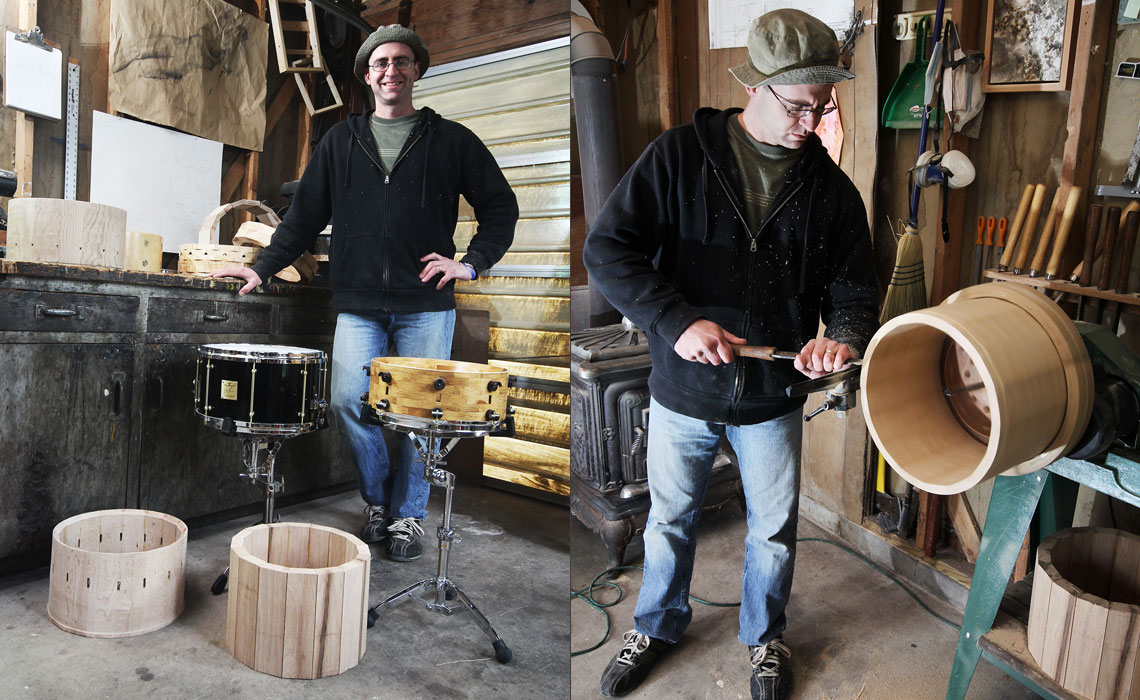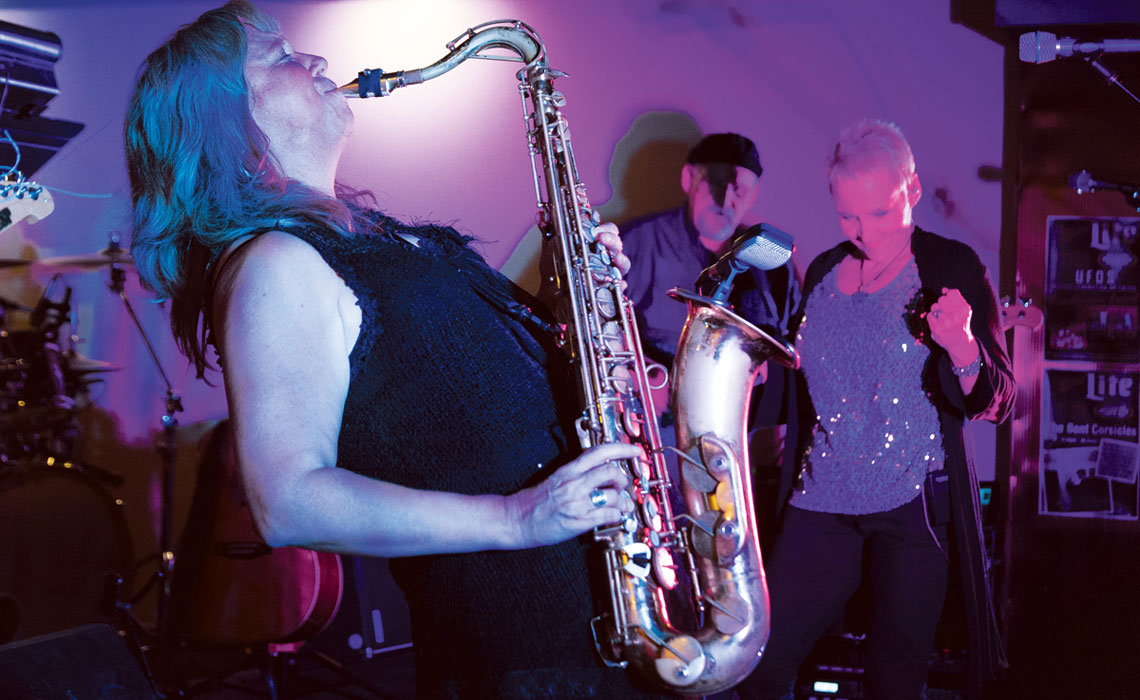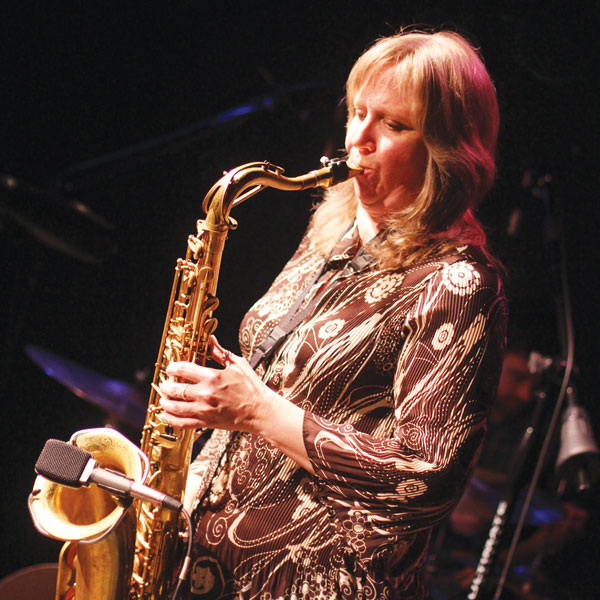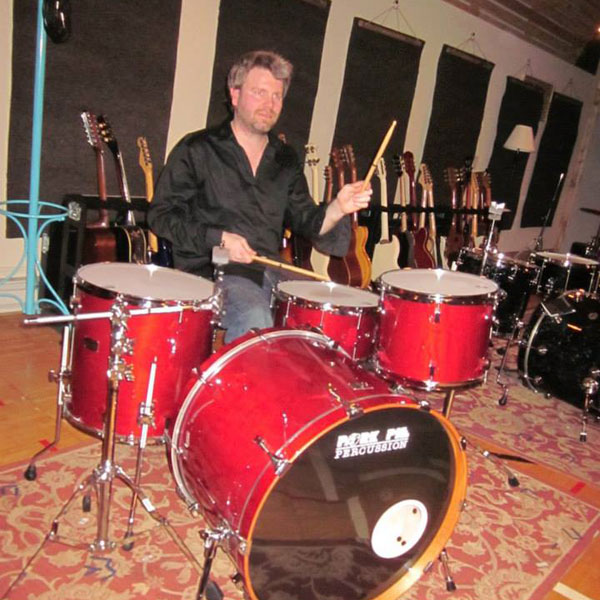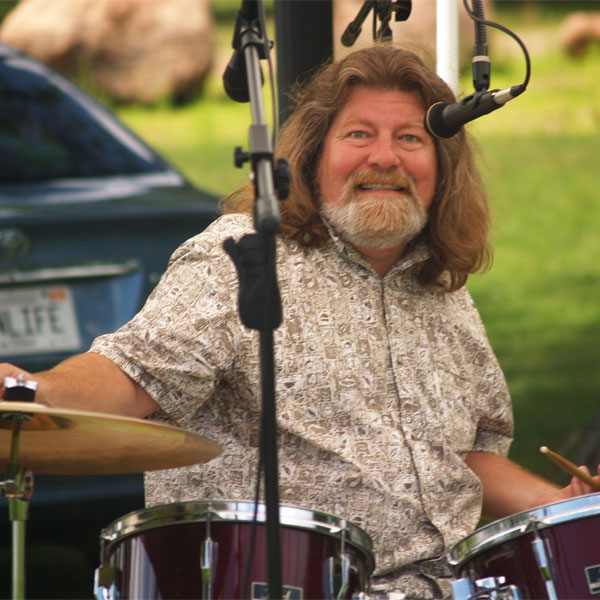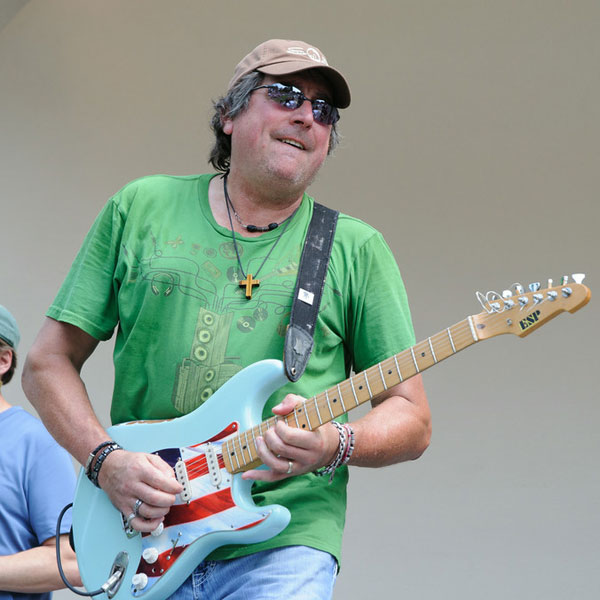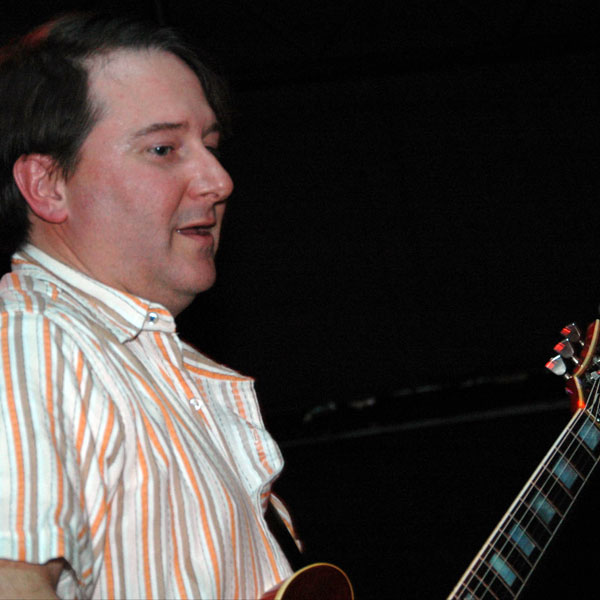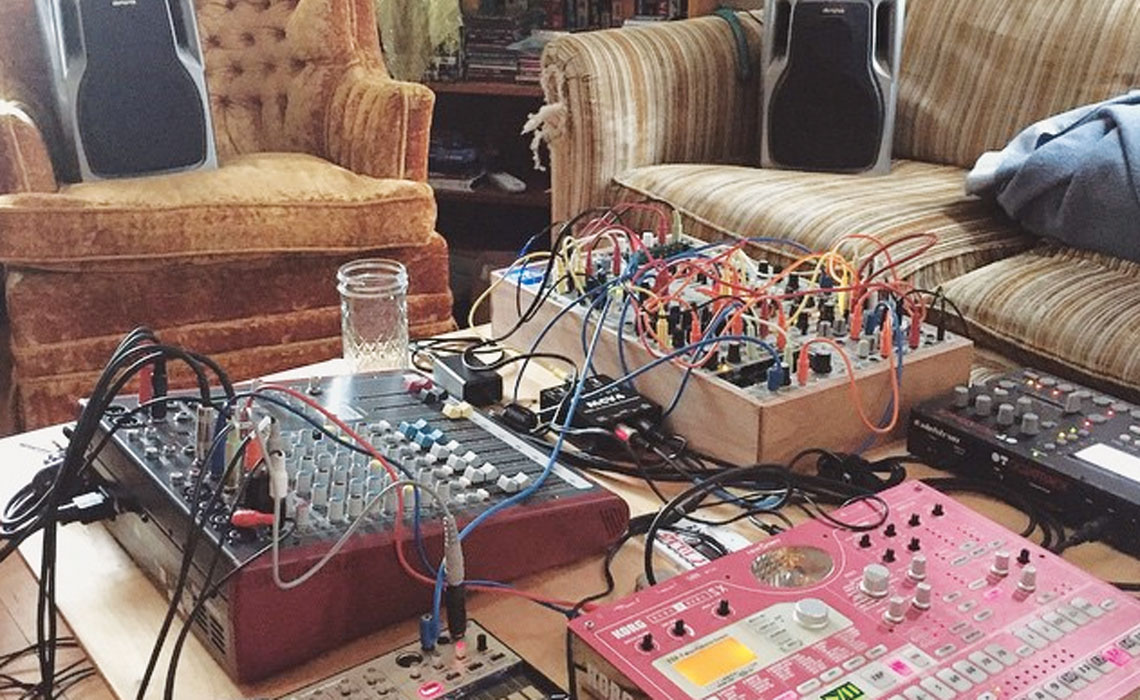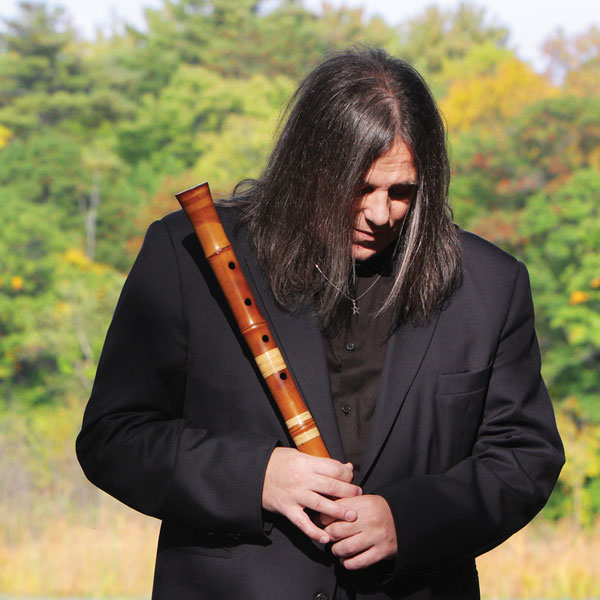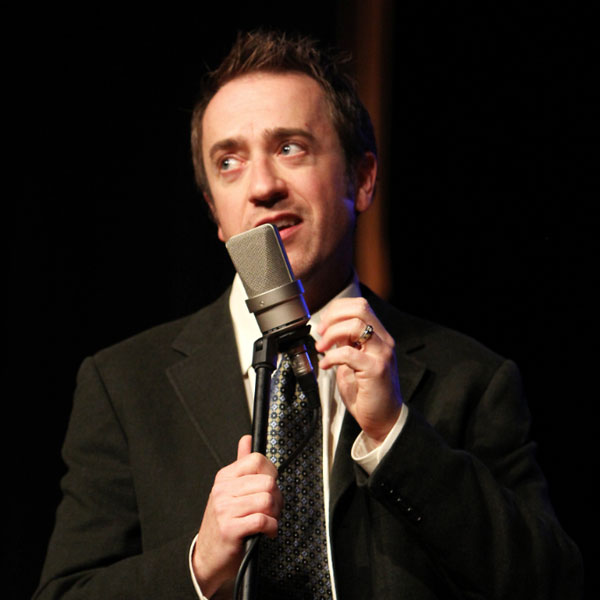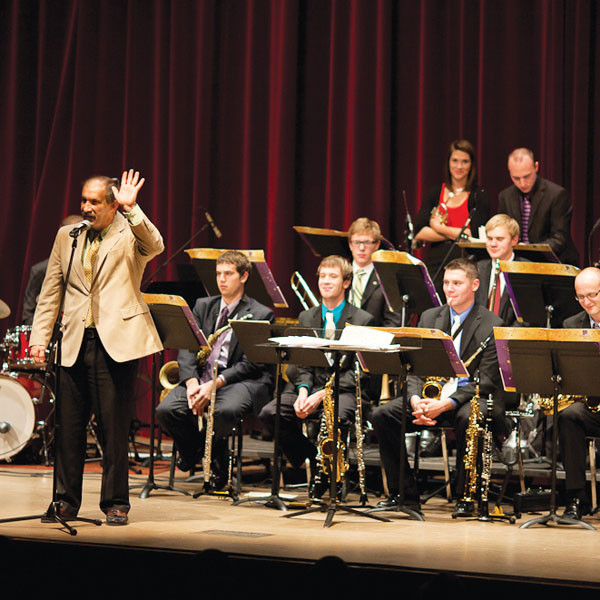1 Building Sound
Before music can be made, someone has to make the instruments, and Three local craftsmen are well known for their work.
by Rob Reid
Gordy feels there is a certain humming going on today. When he talks to folks outside of the area, they often equate Eau Claire with music.
Bischoff Guitars
If you mention instrument makers in the Chippewa Valley, luthier Gordy Bischoff’s name always comes up first. This is the 40th year Gordy has been making guitars. Bischoff guitars will most likely be well represented at the Eaux Claires festival. Justin Vernon owns three, including a whiskey-barrel guitar and the guitar featured on the song “Holocene” from the Grammy-winning album Bon Iver, Bon Iver.
Gordy also builds ukuleles. A guitar-player himself for the past 50 years, Gordy says the ukulele is now his playing passion. He shared a great anecdote about receiving a call from April Base Studio that they had a ukulele emergency. A small group arrived at his shop including a quiet, unassuming man. Gordy lent him a ukulele to finish the recording. That man later asked if he could purchase the instrument. Gordy started writing his name down: “S-u-f-j-a-n Stevens.”
In addition to building stringed instruments, Gordy repairs them. He spends long days on both aspects of his career, segmenting his work: a few hours repairing, then setting that work aside to build guitars, sometimes working on a few at a time, and then going back to finishing up the repairs. When not in his shop, Gordy hits the guitar festival scene, having recently showcased his work at the Memphis Guitar Festival. His products can be seen at www.bischoffguitars.com.
Gordy compared today’s music scene to what it used to be back in the 1970s when he first moved to the area. It was a bit slower back then but easier for musicians to play enough to pay the rent. He’s upset that venues won’t support them enough today to enable most of them to quit their day jobs. That said, Gordy feels there is a certain “humming” going on today. When he talks to folks outside of the area, they often equate Eau Claire with music.
Oliver Snare Drums
Drummer and visual artist Eric Lee began making drums because he hated playing on crappy drums and couldn’t afford the cost of quality instruments. Since that first drum, his business – which is named after his son – has been a viable addition to the Chippewa Valley these past three years. Eric’s snare drums are custom-built specifically to a drummer’s needs and budget. Eric crafts only snare drums, although he did admit that this summer he will build his first kit for himself. Eric is also a visual artist, and one can see that skill reflected in the drums on his website: www.oliversnaredrums.com.
Eric is a family man – early to rise, early to bed – which isn’t really conducive to a musician’s schedule. Although a musician himself, he tends to stay on his woodsy spread south of Eau Claire, working on his various projects. Eric is pleasantly surprised how many area drummers will order from him when quality drums can be bought more cheaply from international sellers.
Eric has begun showcasing his visual artwork in New York. An art dealer learned about Eric just as he was showing at the Volume One Gallery. His exhibit was followed shortly thereafter by a feature on Wisconsin Public Television.
Eric is also busy building a “quirky” play set for the Eaux Claires Festival. The details are “mum’s the word” for now. The finished product is supposed to be a surprise for concertgoers, but a major performer will be showcased on it. We actually sat on the unfinished play set while conducting this interview. There’s a lot of work left to be done on it, but Eric was very calm about the enormity of the project that faces him. Once that’s done, it’s back to the drums.
Dwarfcraft Devices
Dwarfcraft Devices, a company owned and operated by Ben and Louise Hinz since 2007, specializes in handmade effects pedals and synthesizers. Ben, who also considers himself a musician foremost, created demonstration videos on YouTube and word-of-mouth led to breakthrough sales from a California music store. Ben and Louise have gone on to sell their products all over the world, including Japan, Australia, Switzerland, and Germany. Musicians who use their products include Weezer, Low, and Justin Vernon. They obviously have fun with their business, proudly proclaiming on their website (www.dwarfcraft.com) that their products are “Built in Eau Claire, WI, while we watch cartoons – because we have the best job.”
Most of their business takes place outside of the Chippewa Valley. Louise feels that they learned from those artistic communities to be the artists they are today. That said, Ben and Louise are proud of the local music scene. Ben stated that there are a lot of talented people who choose to do their best work here with no hope of financial reward, yet they continue to make their music. “It is a rare thing that a really good band will play to an empty room in Eau Claire,” Louise notes.
Their latest product is the ECX1, “a combination of four pedals worth of stuff plus mixers and oscillators in one unit.” The Wizard of Pitch, a new pedal, is the integral component of the ECX1. Ben will be premiering it at the Eaux Claires Festival, mostly at an onsite interactive dome featuring sound and videos. He claims this new item is a compendium of everything they’ve worked up to this point. Ben says, “It’s like the feature film adaptation of our bestselling book series.” He’ll be able to showcase all of his skills and roles on a grand scale at the festival: musician, engineer, and businessman. The ECX1 will be available for purchase later this summer.



